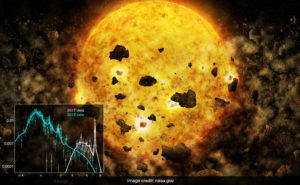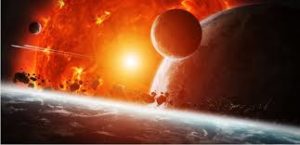
NASA Scientists Discover A Young Star Eating Up Planets
Washington: According to the observations made from NASA’s Chandra X-ray Observatory scientists may have discovered for the first time that a young star is devouring a young planet or planets.

“Computer simulations have long predicted that planets can fall into a young star, but we have never before observed that,” said lead researcher Hans Moritz Guenther from Massachusetts Institute of Technology’s Kavli Institute for Astrophysics and Space Research.
“If our interpretation of the data is correct, this would be the first time that we directly observe a young star devouring a planet or planets,” Mr Guenther said.
The study was first published in the Astronomical Journal suggesting that the parent star is in the process of devouring all the planetary debris accumulated from the collision of infant planetary bodies. The star is located at about 450 light years from Earth.
The recent discovery gives the scientists an insight into the ongoing processes affecting the survival of infant planets.
The astronomers were puzzled since 1937 over the variability of the young star named as RW Aur A.
The star was observed to fading its optical light briefly for every few decades and brightened again. In recent years they observed the star dimming its light more frequently but for longer periods.
Scientists expect the new study could very well explain the real cause behind the star’s recent dimming event, that is, according to the study, a collision of two infant planetary bodies, which includes at least one object to be as larger as a planet.
So the process of resulting planetary debris falling into the star would certainly generate a thick veil composed of dust and gas. This thick veil would temporarily obscure the star’s light.
The previously reported dimming events of the star may be due to similar smash-ups involving either two planetary bodies or large remnants of past such collisions that met head-on and then broke apart again.
“Much effort currently goes into learning about exoplanets and how they form, so it is obviously very important to see how young planets could be destroyed in interactions with their host stars and other young planets, and what factors determine if they survive,” Mr Guenther said.
Scientists have kept a close watch to study the behavior and life cycles of stars and planets. They studied both the past life of stars and planets and also predicted the future of them. Therefore, after observing such stars, they even said that one day the sun too will exhaust itself of energy resulting in death of it. But in the process it will eat up the whole planetary system related to it.
You May Also Read: BJP Puts Down Supreme Court’s Advice Of Making Separate Mob Lynching Law
